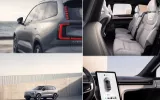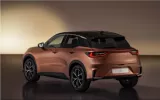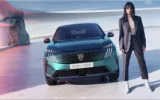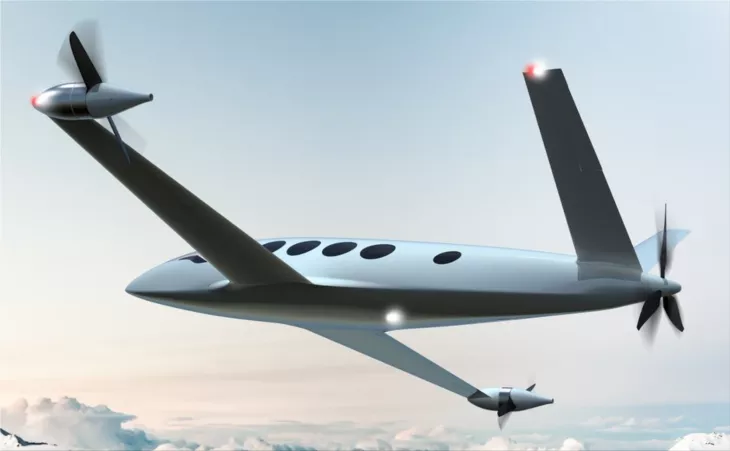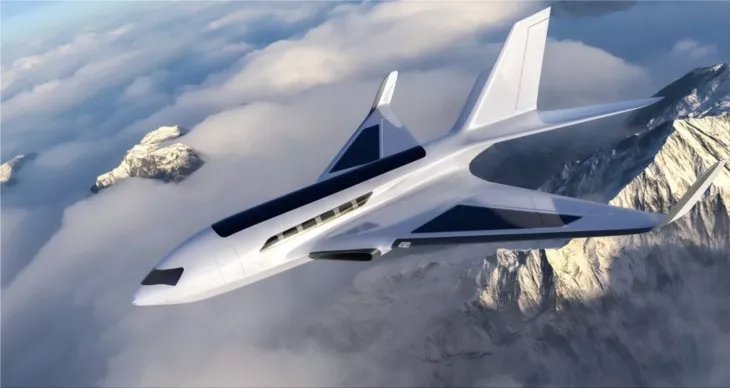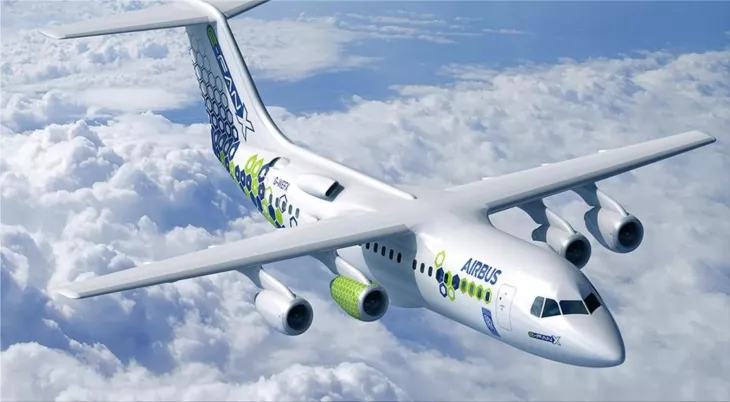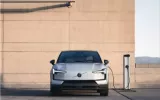Electric planes are not an unreal dream: United and EasyJet are among the early adopters, with the first commercial flights to the United States scheduled for 2026. You may soon be boarding an electric airplane. The first big airline rollout, with United, is set for 2026. Nations like Denmark and Sweden have said they want to stop all domestic flights using fossil fuels by 2030.
The last year has accelerated the aviation industry's progress toward commercially viable electric aircraft. United Airlines announced in July that it would acquire fully electric planes with a capacity of 19 passengers from Swedish startup Heart Aerospace; the electric planes are scheduled to begin service in the United States in 2026.
In Europe, EasyJet's collaboration with US startup Wright Electric has resulted in plans to construct the Wright 1, an all-electric, 186-seat commercial passenger plane with an 800-mile range scheduled to enter service around 2030. Additionally, Wright Electric unveiled plans for a 100-seat electric aircraft in November, the Wright Spirit, expected to debut in 2026.
While these are some of the front-runners, a slew of aviation businesses, ranging from startups to industry heavyweights and government institutions such as NASA, are actively researching commercial electric jets intending to reach carbon-free flying. According to experts, the trajectory is necessary for the environment in a mounting climate disaster.
"We are well aware that transportation is the single most significant source of carbon emissions and global warming. And flying plays a substantial role in it, "says Jeff Engler, president and CEO of Wright Electric.
In the words of Lukas Kaestner, a co-founder of Sustainable Aero Lab, a German accelerator that helps startups from all over the world make their planes more environmentally friendly, this fervor is a sign of "the new zeitgeist, in which global warming has become a concern for an increasing number of people and a cause for action." Bank Suisse By 2035, according to UBS, a full 25% of the civil aviation sector will be hybrid or all-electric. So the race to get commercial electric flying off the ground has begun—here we are.
Why are electric planest gaining traction now?
Aviation emitted around a billion tons of CO2 into the atmosphere per year, pre-pandemic, or roughly 3% of global carbon dioxide emissions. If the growth rate continues, airplanes' amount of carbon is expected to quadruple by 2050.
This puts the business at odds with the United Nations' 2050 target of net-zero carbon emissions. Most of the world's biggest airlines agreed to meet that goal in October, but the current technology for planes that run on fossil fuels is a big problem.
According to Venkat Viswanathan, a mechanical engineering professor at Carnegie Mellon University and an aviation battery expert, electric battery power "would provide a route for managing emissions, at least for a large fraction of aviation." However, he cautions that technology alone will not address the carbon crisis: "I think that many other things, a lot of other competing technologies, need to be taken into account for the whole future of aviation."
Aviation's transition to renewable energy is also occurring in other modes of transportation. So that inevitable change that has already happened with cars, is happening with boats, and is happening now with aerospace is also happening, says Engler of Wright.
Simultaneously, governments are rapidly developing rules to bring in a more environmentally friendly future of flying. Again, Scandinavia is leading the charge: Denmark and Sweden intend to eliminate all fossil fuel-powered domestic aircraft by 2030; Norway wants to do it by 2040. Meanwhile, France and Austria have recently placed prohibitions on some domestic short-haul flights.
The Biden administration is also pushing for carbon reductions in the United States, emphasizing a clean-energy transportation sector. Yet climate campaigners such as Greenpeace's Charlie Cray assert that US policies "are just getting started down the runway." According to Cray, the administration has put too much emphasis on sustainable aviation fuels. Instead, the government should "prioritize the introduction and acceptance of electric engine technology for shorter passenger routes and freight planes," he says.
How will electric flight appear?
Electric planes run on battery-generated energy rather than conventional liquid jet fuel. Yet today's batteries don't have nearly as much energy density as jet fuel, which means they have to be very heavy and bulky to have good aerodynamics because of their weight and mass.
While lightweight batteries eventually strong enough for smaller electrified planes with shorter ranges are becoming more practical, Viswanathan believes that substantial battery breakthroughs—or other technologies—are required for bigger airplanes. He continues, "You would probably need around three to four times the airplane's weight in batteries to power it, which is why they are not manufactured."
As a result, the fledgling business is first focused on short-haul regional flights using smaller planes, which aligns with a sizable section of aviation: Today, over half of all aircraft itineraries, are less than 500 miles in length.
Electric planes are also proving to be more cost-effective for airlines, with lower fuel and maintenance costs. "We think airlines will have less money to spend in the future, which they may pass on to customers," says Engler.
It may be possible for United Airlines to pass some of these "operational savings" on to its customers, says Michael Leskinen, president of United Airlines Ventures, the airline's corporate venture fund.
Because electric planes have reduced operating expenses, they offer the potential to restart short-haul services to smaller regional airports that were previously abandoned owing to their unprofitability. "Until a few decades ago, nineteen-seater aircraft were the standard for regional flights, until prices forced the industry to utilize larger planes," Leskinen adds. He said that the airline plans to use the ES-19 planes on more than 100 regional flights from most of its hubs.
Who are the major players?
Around 200 businesses worldwide are currently developing electric planes, many of which have already conducted successful brief test flights. It is a diverse and competitive environment in which entrepreneurs may have an advantage—Sustainable Aero Lab's Kaestner notes that startups "are considerably more agile and adaptable than industry heavyweights."
Smaller two-to four-person electric planes for private, corporate, and electric air taxi service—primarily via eVTOL (electric vertical takeoff and landing) aircraft—are already rolling out, backed by industry heavyweights such as Boeing, Airbus, NASA, and Toyota, as well as a slew of buzzy startups such as Archer Aviation, Joby Aviation, Lilium, and Vertical Aerospace. American Airlines and Japan Airlines are among many airlines that have placed eVTOL orders, with ambitions to launch a new type of electric air taxi service as early as 2024.
"Ten years from now, the journey from LAX to JFK will likely remain non-electric, but you will be able to travel to the airport via electric air taxi at a very affordable rate and with zero emissions," Kaestner adds.
Additionally, six to nine passenger jets are nearing takeoff. Israel's Eviation has built the Alice, a nine-seat electric plane that regional US airline Cape Air will begin flying next year. The electric propulsion engine for Alice was developed by MagniX, a sibling business situated in Washington State. One of Canada's biggest plane companies is also looking into the MagniX technology for retrofitting its planes. The goal is to start commercial service on electric planes soon.
Heart Aerospace's bigger 19-seat jets are scheduled to begin service on short-haul domestic routes in 2026, departing from hubs such as Chicago and San Francisco; regional US carrier Mesa Airlines and Finland's Finnair have also committed to acquiring Heart's ES-19s.
The biggest electric plane currently under development is Wright Electric's 186-seat Wright 1, which EasyJet plans to begin operating in 2030. Wright also revealed plans in November for the 100-passenger Wright Spirit, which will refit BAe 146 planes with electric batteries. British aerospace manufacturer BAE Systems manufactures the BAe 146 planes.
Retrofitting older aircraft with battery technology is a far faster route to certification than starting from scratch. "It enables us to accelerate time to market and begin reducing the industry's carbon footprint considerably earlier," Engler adds. He predicts that the modification will cut the time required for government certification in half, if not less.
What happens next?
Apart from the engineering challenges associated with battery technology, experts anticipate further impediments to the broad adoption of electric planes. For example, getting new technology approved by regulators and the public takes time. There are also financial hurdles and a period when people get used to the latest technology and think it is safe.
Additionally, there is the concern that electric aviation, which focuses on smaller planes and shorter routes, may not eventually have the necessary impact on the industry's emissions reduction ambitions. On the carbon emissions side, 95 % of the industry's carbon footprint is accounted for by airplanes with more than 100 passengers, Engler explains, justifying Wright Electric's choice to focus on more considerable plane development.
Because "transcontinental or even real long-haul operations are still out of reach for the foreseeable future," the industry's focus on longer routes must be on cleaner developing energies such as sustainable aviation fuels and, farther away, hydrogen power.
Another viable method is hybrid-electric technology, which combines batteries and conventional jet fuel engines. Some companies like California-based startup Ampaire and France's VoltAero are already constructing hybrid planes.
Viswanathan believes that hybrids will serve as an important bridge to an all-electric future, noting that hybrids would provide fuel and energy savings, emissions reductions, and help acclimate the public to electric flight, much like electric cars as the Toyota Prius have done for the automotive industry.
Consumers, too, experts assert, have the purchasing power to contribute to a more environmentally friendly aircraft business. Engler says that "customers are becoming more and more interested in cleaner, greener, quieter, and more affordable modes of transportation."
Greenpeace's Herwig Schuster says environmentally conscious travelers should reconsider flying and that more immediate policy measures are needed "to address the aviation sector's out-of-control emissions," such as flight reductions, short-haul flight bans, and investment in more environmentally friendly modes of transport, such as rail. Without more immediate action, he warns, "greener fuels or electric planes would only result in emissions reductions that are much too little or too late to meet today's demand."

